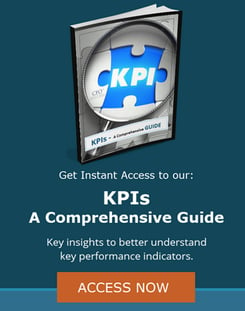 With all the buzz around generative AI in business, many finance professionals are eagerly waiting to see what the future will hold for AI usage in accounting and finance. Overall, the sentiment seems to be positive, although many are taking a more cautious approach as they wait to see where and how it will be utilized. But while AI integration is still in its early days for most small to mid-sized businesses, companies of all sizes across all industries have been benefiting from Machine Learning (ML) for decades and can largely credit their success to doing so. And yet, the average industry professional cannot necessarily articulate what the difference is between AI and ML and how ML functions support strategic planning. So, let’s look at the difference with the purpose of understanding how CFOs and their organizations are currently benefiting from ML and how they can further utilize Machine Learning to improve business results.
With all the buzz around generative AI in business, many finance professionals are eagerly waiting to see what the future will hold for AI usage in accounting and finance. Overall, the sentiment seems to be positive, although many are taking a more cautious approach as they wait to see where and how it will be utilized. But while AI integration is still in its early days for most small to mid-sized businesses, companies of all sizes across all industries have been benefiting from Machine Learning (ML) for decades and can largely credit their success to doing so. And yet, the average industry professional cannot necessarily articulate what the difference is between AI and ML and how ML functions support strategic planning. So, let’s look at the difference with the purpose of understanding how CFOs and their organizations are currently benefiting from ML and how they can further utilize Machine Learning to improve business results.
The Difference Between ML and AI
To compare Machine Learning and AI it’s important to understand that when people use the term “AI” these days they are typically referring specifically to Generative AI because of all the buzz around Generative AI integration across so many popular software systems and search platforms. (A broader discussion around AI in general would need to include all the various applications of artificial intelligence, and that would be a much wider conversation.) So, what’s the difference when looking at generative AI versus Machine Learning?
Generative AI is a much narrower subset of AI that is focused solely on creating new content or data that either mirrors existing content or synthesizes existing content into a new version of that content. ML is much broader and has an entirely different focus. It uses algorithms to help identify patterns, make decisions, or predict outcomes, giving computers the ability to learn from data outputs to improve their performance over time.
Where CFOs are Utilizing ML
The digitalization of so many functions and activities over the last two decades has put ML’s vast capabilities into the hands of organizations of all sizes, creating widespread usage, especially across:
- Forecasting – Data analytics software that uses ML can evaluate historical financial data, market trends, and other pertinent factors to improve financial forecasting. Better forecasting has a rippling effect through the organization, informing decisions related to budgeting, cash flow management, and revenue optimization to improve results.
- Risk Management – ML can leverage large datasets to assess risk based on key factors to better identify potential risks and even predict their impact, allowing organizations to better plan for how they will manage them.
- Fraud Mitigation – These days ML can be used to both prevent fraud from happening as well as detect it more quickly when it does occur. The days of tediously checking A/P and A/R line by line are over in favor of using ML to analyze transactions at scale. ML usage offers greater efficiency as well as accuracy in detecting patterns that may point to fraud and identifying anomalies.
- Cost Management – Automating expense analysis helps to identify areas where cost savings can be realized to improve the organization’s overall financial situation.
- Cash Flow Management – In the same way that ML can improve expense management it can also improve cash flow management. By studying cash inflow and outflow patterns, ML models can identify opportunities for areas where cash flow can be better managed to increase liquidity.
- Compliance – Where compliance is required ML can automate monitoring and reporting to improve timeliness and accuracy across complex and evolving regulatory requirements.
- Task Automation – Like every business professional these days, executives are finding that they can use ML to automate recurring tasks. Across everything from financial reporting to reconciliations, ML can handle the busy work of repetitive, yet necessary, tasks.
How to Get More Out of ML
Like any other tool, ML will only be as effective as the person wielding it. Sure, in some instances (like filing compliance reports or generating key financial reports) ML can handle the task at hand autonomously, but in most instances, it still requires people to do the real work that follows. For example, while ML can improve forecasting or identify cash flow management opportunities, it can’t make decisions.
So, while ML is being used across a wide variety of accounting and finance activities, it still needs people with the right skills and knowledge to analyze its outputs and use them to make strategic decisions. Investing in human capital will never be obsolete because today’s technology can only support people, not replace them. There will always be the need for experienced professionals that can bring their expertise to the role. So, if your technology isn’t providing the advantage that you were looking for, assess your talent to see what can be improved on the people-side of the equation because that is just as important to finding success.
When you need outsourced CFO services to augment your existing tools, please reach out to us! We have a highly experienced team of fractional CFOs ready to provide as much or as little help as you need as you navigate the ever-changing world of finance. Whether you are new to ML and AI or already have them deeply integrated into your accounting and finance functions, we can meet you where your organization is to offer the executive-level finance support you need. Contact us today!





